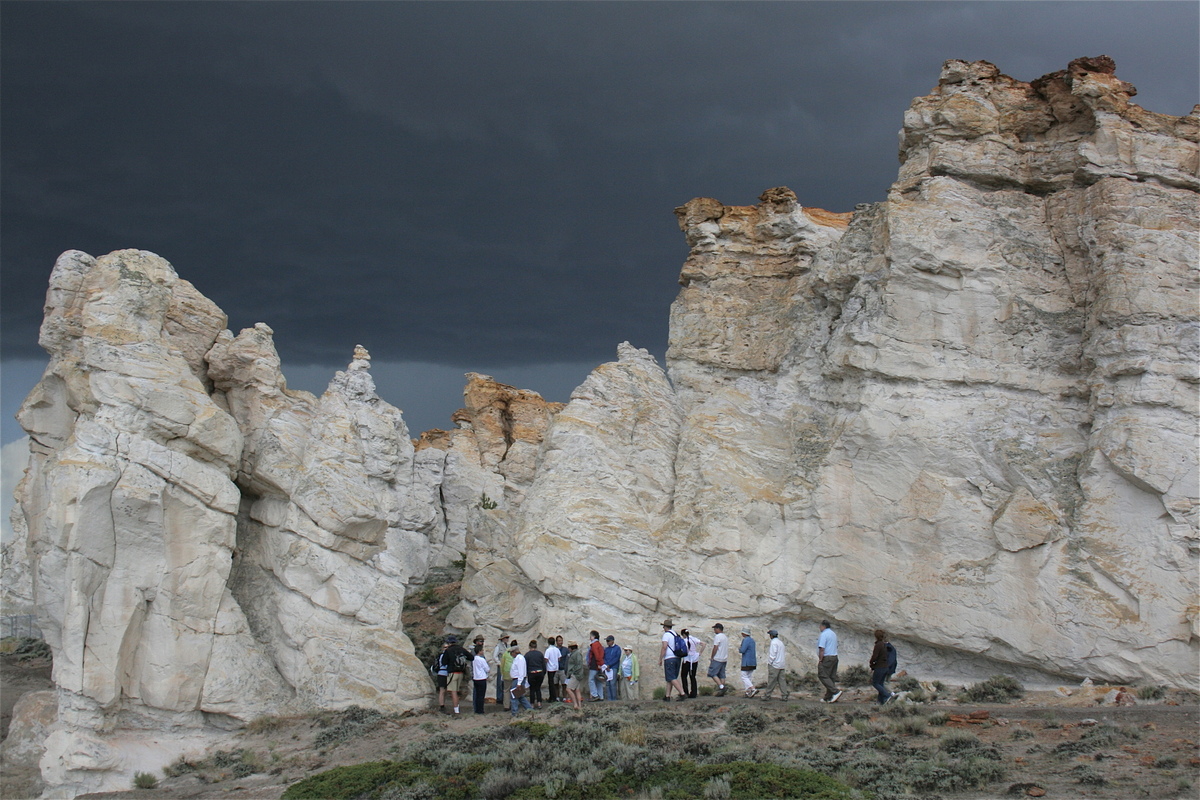By AHW Staff
August 16, 2017
The Castle Gardens Petroglyph Site is located in central Wyoming approximately 45 miles east of Riverton. The name of the area comes from the outcropping of sandstone that the wind has eroded into fanciful shapes resembling the turrets and towers of castles. This unusual formation has been luring visitors for thousands of years, and many of them left their mark in the soft sandstone – the area holds a treasure of Native American rock art, or petroglyphs.
The most famous petroglyphs were done in the Castle Gardens Shield Style, the oldest recognizable example of the shield-bearing warrior figure type. It is described as “elaborate and carefully made figures,” and it “combines several different manufacturing techniques that serve to distinguish the type as unique in the Bighorn and Wind River Basins. The style is also unique in that it depicts shields alone as well as shield-bearing warriors” (Francis & Loendorf 2002:136).






